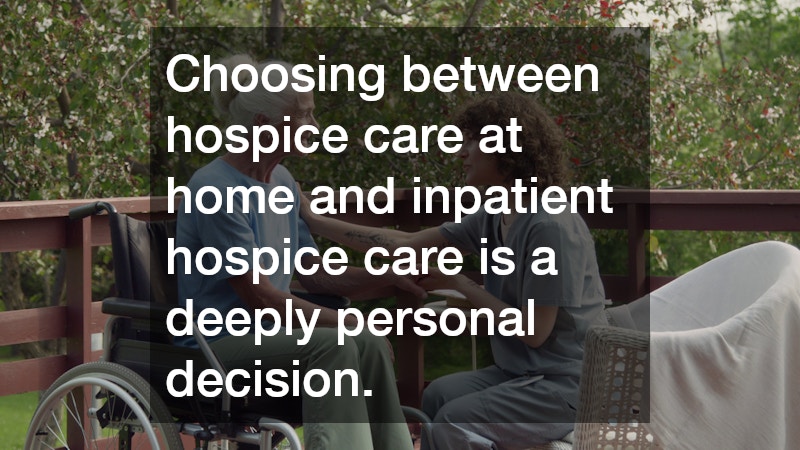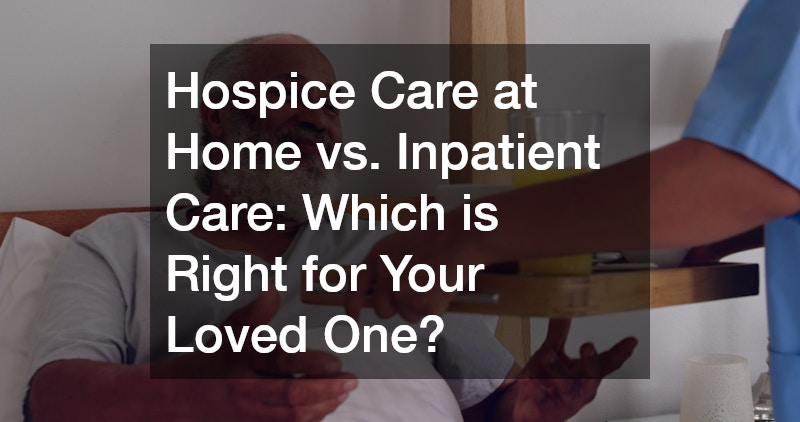Hospice Care at Home vs. Inpatient Care Which is Right for Your Loved One?
Choosing the right end-of-life care for a loved one is one of the most important decisions a family can face. When a person is facing a terminal illness, comfort, dignity, and quality of life become paramount. Two common options are hospice care at home and inpatient hospice care. Understanding the differences, benefits, and challenges of each can help families make informed decisions that align with the patient’s needs and preferences.
Understanding Hospice Care at Home
Hospice care at home provides specialized support for individuals who wish to spend their final days in the comfort of their own residence. This approach allows patients to remain in familiar surroundings surrounded by loved ones, while receiving professional medical care. Hospice teams typically include nurses, aides, social workers, and volunteers who visit the home regularly.
The focus of hospice care at home is not to cure the illness but to manage pain and symptoms, while addressing emotional, spiritual, and practical needs. Families play a central role in caregiving, supported by the hospice team. One of the most significant benefits is the ability to maintain a sense of normalcy and independence for the patient. However, it does require family members to be actively involved and may involve challenges such as managing medications and medical equipment.
Benefits and Challenges of Inpatient Hospice Care
Inpatient hospice care takes place in a specialized facility or hospice unit within a hospital or nursing home. This option is ideal for patients who need continuous medical supervision, have complex symptoms, or require equipment that is difficult to manage at home. Inpatient hospice ensures 24/7 care by trained professionals, providing peace of mind to both the patient and their family.
The benefits of inpatient care include immediate response to medical issues, a structured environment for symptom management, and access to specialized therapies and counseling. Families are relieved from the responsibility of round-the-clock care, which can reduce stress and burnout. On the other hand, some patients may feel a sense of loss or discomfort being away from home, and visiting hours may be limited. The emotional aspect of leaving familiar surroundings can sometimes outweigh the clinical advantages, depending on the patient’s personality and support system.
Key Considerations for Families
When deciding between hospice care at home and inpatient care, families should consider several factors. First, assess the patient’s medical needs. If symptoms are well-managed and the patient can remain comfortable at home, home hospice may be ideal. Conversely, if frequent medical interventions or continuous monitoring is required, inpatient care may be safer.
Second, evaluate the family’s ability to provide care. Hospice care at home works best when there is a committed support network available to assist with daily tasks, medication administration, and emotional support. Families without the time, resources, or physical ability to provide hands-on care may benefit more from inpatient care.
Financial considerations also play a role. Both options are often covered under Medicare and most insurance plans, but costs for additional services, equipment, or extended inpatient stays may vary. Finally, consider the patient’s emotional well-being. Many people find comfort in being surrounded by familiar environments and cherished routines, which can favor home-based care, while others may prioritize professional supervision and immediate access to medical staff.
Making the Decision
Choosing between hospice care at home and inpatient hospice care is a deeply personal decision. It often involves balancing the patient’s wishes, medical needs, and the family’s ability to provide support. Open conversations with the patient, family members, and the hospice team are essential.
A good starting point is to ask questions about the level of care required, the frequency of visits, and the types of services provided. Families should also discuss emotional and spiritual support options, as these play a critical role in maintaining the patient’s quality of life. In many cases, hospice care can be flexible. Some patients may begin with home hospice and transition to inpatient care if symptoms become more complex.
Ultimately, the right choice prioritizes comfort, dignity, and the emotional well-being of both the patient and their loved ones. By carefully weighing the pros and cons of each option, families can ensure that their loved one receives compassionate, tailored care during this important stage of life.
Deciding between hospice care at home and inpatient care is a significant choice that involves both practical and emotional considerations. Hospice care at home offers familiarity, independence, and close family involvement, while inpatient care provides continuous medical supervision and specialized support. Assessing the patient’s medical needs, family resources, and emotional preferences can help guide this decision. With open communication, careful planning, and support from hospice professionals, families can provide their loved ones with comfort, dignity, and meaningful moments during life’s final chapter.

